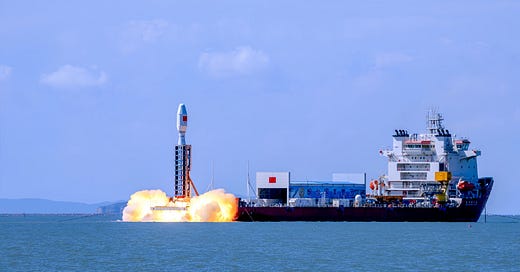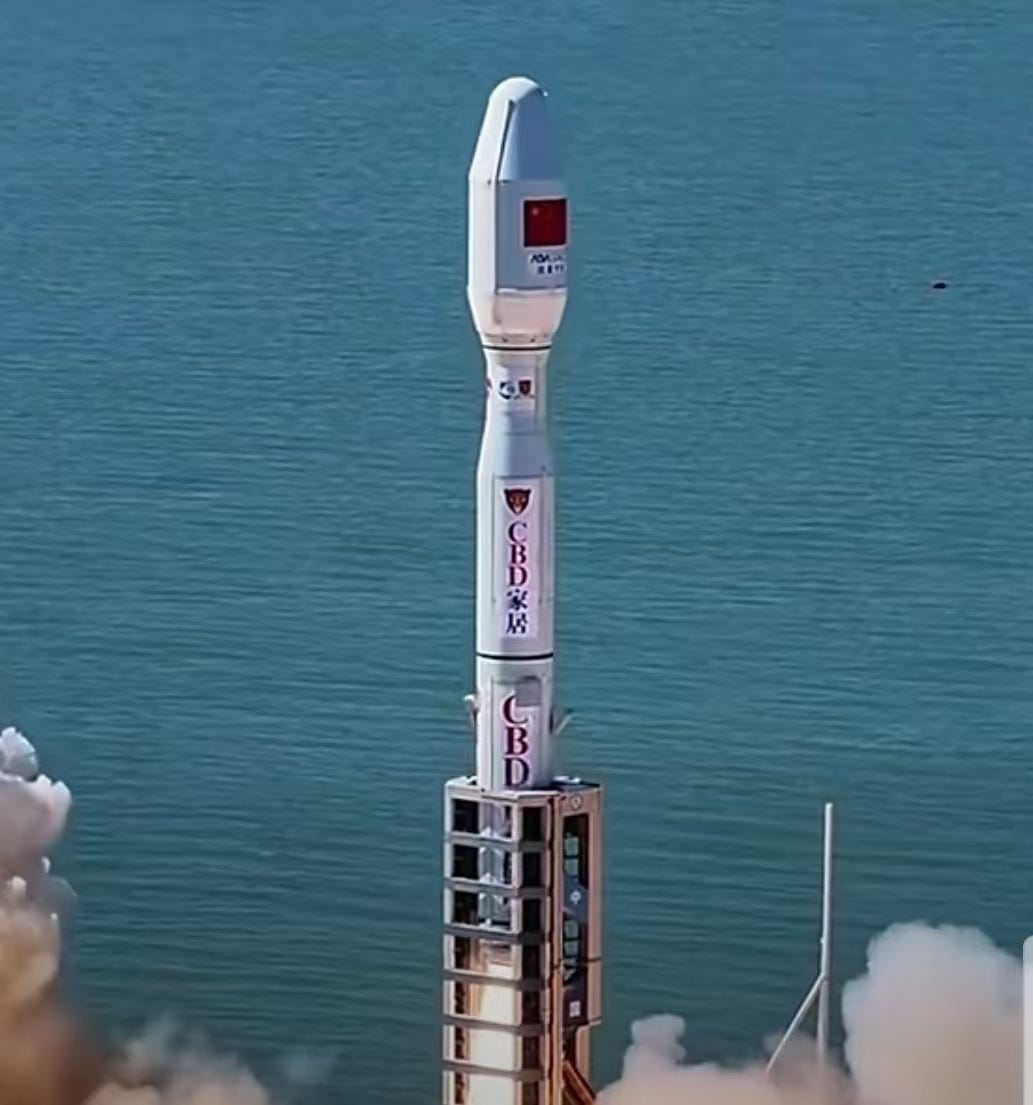Business from the sea to space [Jielong-3 Y4]
The fourth Jielong-3 launch has carried various commercial satellites to sun-synchronus orbit.
A Jielong-3 launch vehicle lifted off from a sea launch platform off the coast of Haiyang, in the province of Shandong in eastern China, at 10:31 am China Standard Time, or 2:31 am Universal Coordinated Time. The Taiyuan Satellite Launch Center also administrated this launch.
To enter a sun-synchronous orbit from the launch location near Haiyang, the launch vehicle performed a ‘large yaw’ maneuver to avoid flying over land and population centers while maximizing the launch window.
For this launch mission, the payloads atop of the vehicle for this launch were as follows:
Tianyi 41 (天仪41) is a 285-kilogram synthetic aperture radar satellite with an imaging resolution of 1 meter. The spacecraft is expected to be operated by Zhangye Constellation Space Technology (张掖星座空间科技有) and will focus on imaging China’s western regions for applications in disaster monitoring.
Luojia-4 01 (珞珈四号01) is a 60-kilogram imaging satellite equipped with a visible light hyperspectral camera and an ultraviolet multispectral camera. The spacecraft was developed by the People's Hospital of Wuhan University (武汉大学人民医院健) and will aim to detect environmental factors that affect human health.
Xingshidai 21 (星时代21) and Xingshidai 22 (星时代22) are technological demonstration spacecraft that will aim to verify a two-way laser-based communication system at speeds of ten gigabits per second. If successful the laser communications terminals will be used to allow satellites to communicate a distances of up to 4000 kilometers.
Xingshidai 15 (星时代15) is another technological demonstration spacecraft equipped with an optical camera and high-performance computing hardware. The satellite will test a ‘space server’ and train an AI model in space.
Tianyan 15 (天雁15) is yet another technology demonstration spacecraft. The spacecraft will image Earth and then conduct data process and compression of the images onboard before sending the images back to Earth via a laser communication system.
Fudan-1 (复旦一号) is a research satellite carrying a solar ultraviolet spectrometer and a millimeter-wave atmospheric humidity profiler. The satellite is expected to make observations of the Sun and Earth. These observations will improve weather forecasts and our understanding of the Sun.
Other satellites on board the rocket were Yuxing-2 05 (驭星二号05) and Jitianxing A01 (吉天星A01).
The China Academy of Launch Vehicle Technology believes that with today’s launch, and two previous missions, the Jielong-3 vehicle is reliable enough for a higher production and launch rate. Optimizations have also been realized to offer a more cost-effective launch service.
This launch was the fourth launch of a Jielong-3 vehicle, and the 44th launch from China this year.
Launch footage via Cosmic_Penguin and TAbusnardo.
Check out the previous sea launch from China
Back out of the blue [Ceres-1S Y3]
Ceres-1S lifted off from its sea launch platform in the Yellow Sea at 13:22 pm China Standard Time, or 05:22 am Universal Coordinated Time, on August 29th. This launch was supported by the Haiyang Oriental Spaceport, in the province of Shandong, with the Taiyuan Satellite Launch Center …
What is Jielong-3?
This section is for those less familiar with China's various commercial launch vehicles.
Jielong-3, also referred to as Smart Dragon-3, is a four-stage solid-fueled launch vehicle manufactured by the China Academy of Launch Vehicle Technology. The vehicle is believed to be operated commercially via a wholly-owned subsidiary of the China Academy of Launch Vehicle Technology. All four stages are believed to burn an unspecified solid propellant with the first-stage generating a reported 200 tons of thrust.
The payload capacity of the launch vehicle is currently as follows:
1,500 kilograms to a 500-kilometer sun-synchronus orbit.
On a launch platform, Jielong-3 is believed to be 31 meters tall. Details about the four stages of the vehicle are scarce but the first two stages have a diameter of 2.64 meters, with the fairing having a diameter of 3.35 meters. When prepared for launch Jielong-3 weighs a believed 145,000 kilograms.
So far Jielong-3 has flown from sea launch platforms in the East China Sea and South China Sea.







![Back out of the blue [Ceres-1S Y3]](https://substackcdn.com/image/fetch/$s_!fJd2!,w_1300,h_650,c_fill,f_auto,q_auto:good,fl_progressive:steep,g_auto/https%3A%2F%2Fsubstack-post-media.s3.amazonaws.com%2Fpublic%2Fimages%2F45cee230-ffef-4b46-8076-6c80b129ff41_1943x1104.jpeg)
